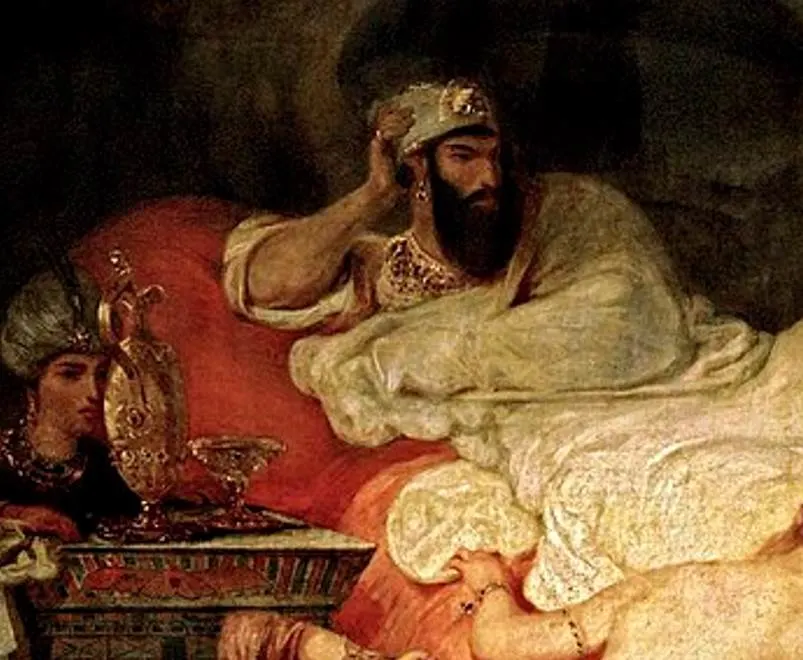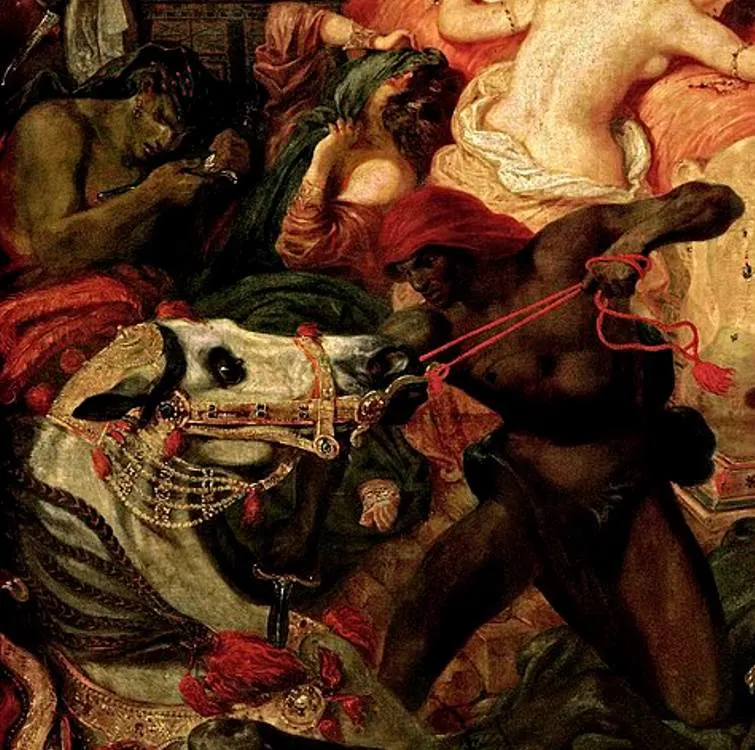The dramatic emotions that came to define the works of renowned Romantic Artist of the French School Eugène Delacroix (1798-1863) come into full play when he painted historical or mythological subjects.
This is especially the case in an epic work called “The Death Of Sardanapalus,” one of the most fascinating works in his oeuvre for several reasons. Let’s take a closer look at some of the most interesting facts about this remarkable work of art.
1. It was painted during the 1820s
Eugène Delacroix had made his name with his first major work called “The Barque of Dante,” a painting that was accepted at the Salon in Paris in the year 122.
Inspired by a work called “The Raft of the Medusa” by his colleague, French pioneer of the Romantic movement Théodore Géricault (1791-1824), he produced yet another painting the following year that was exhibited at the yearly Salon called “The Massacre at Chios.”
He completed The Death of Sardanapalus in 1827, and you guessed it right, it was yet again displayed at the Salon of 1828 in Paris.

2. It depicts the story of the final King of Assyria
The painting depicts a man who was considered to be the final King of Assyria named Sardanapalus. He supposedly lived in the 7th century B.C. and was infamous for his extremely decadent lifestyle full of luxury and self-indulgence.
At least, this is the story according to the ancient Greek historian Diodorus Siculus (90-30 B.C.). Modern-day historians universally agree that the final King of Assyria was in fact Ashur-uballit II (645-606 B.C.).
Just like his move away from the ideals of the Neoclassical artists, Eugène Delacroix didn’t care much for the exact details of the historical events but rather enjoyed depicting the remarkable story of the demise of a man who lived his entire life trying to satisfy his urges.
3. It was inspired by a historical tragedy written by Lord Byron
The inspiration for the painting came from a Play called “Sardanapalus” that was written by Lord Byron in 1821. This play tells the story of the fall of the monarchy and the details of the demise of the extravagant supposed final king.

Lord Byron in turn derived the story from the accounts of the ancient Greek historian Diodorus as he recounts the final chapter of the once great Assyrian Empire.
Delacroix integrated broad brushstrokes and incredibly rich and warm colors to depict this orgy of chaos and carnage. The king himself is seen lying on the bed, seemingly uninterested in the massacre that is happening just below him.

4. It wasn’t very well received at the Salon of 1828 in Paris
Delacroix had a habit of producing shocking paintings, especially in the context of the austere tradition of Neoclassical art that had dominated the previous decades in the late 18th and early 19th centuries.
He probably took it a bit too far with this one as it wasn’t received very well at the Salon of 1828. The fact that King Saradanapalus was far from being a classical hero surely didn’t help as well.
One critic at the Salon referred to The Death of Sardanapalus as being “the fanaticism of ugliness,” something that pretty much explains what many people thought of the work back then.
5. It’s currently on display in the most popular museum in the world
Just like many other works by Eugène Delacroix, the painting never left Paris following its exhibition at the Salon of Paris in 1828.
It entered the collection of the Louvre Museum in Paris and remains on public display at the most-visited museum in the world today.

More interesting facts about the Death of Sardanapalus
6. Just like many of the other works by Eugène Delacroix, this was painted at a monumental scale. This epic oil on canvas painting has dimensions of 392 × 496 centimeters (154 × 195 inches).
7. The extravagance of Sardanapalus didn’t know boundaries according to Diodorus. He presumably wore women’s clothes, make-up, and slept with both men and women.
The ancient Greek writer also included that he wrote his own epitaph claiming that physical satisfaction was the only true purpose in life. It’s fair to conclude that Saradanapalus can be described as the epitome of a hedonist.

8. Delacroix depicted the final king of the Assyrians as he overlooks the scene full of the incredible chaos below him. He wears white clothes and gold around his neck as he watches 6 women being massacred by 6 men.
One woman is lying dead at his feet and the 6 women appear either fully or partially naked. Remarkably, one of the women engages with the viewer, the one depicted at the end of the bed.
9. Perhaps the most remarkable scene in the chaos is one of the most overlooked ones. In the bottom left corner, a man is trying to kill an exuberantly decorated horse. Just above the horse, a greenish-looking man is taking his own life with his sword.

The chaos of the scene is exaggerated by the painterly brushstrokes and the choice of colors used by the artist. The remarkable ability of Delacroix was to integrate a sense of balance into the chaos, regardless of the asymmetry of the overall composition.
10. The original painting is located at the Louvre Museum. Delacroix created another, much smaller version of this work as well. about 17 years later in 1844.
This oil on canvas painting has dimensions of 73.71 × 82.47 centimeters (29.02 × 32.47 inches) and is located at the Philadelphia Museum of Art in Pennsylvania.

